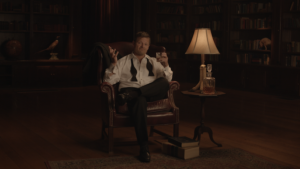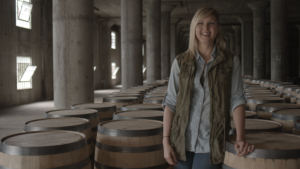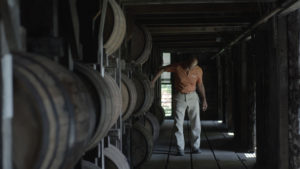“NEAT: The Story of Bourbon” Captures the Kentucky Spirit
Bourbon is as quintessential to Kentucky’s heritage as horses, basketball or limestone. Wading into the history of America’s spirit is the new documentary NEAT: The Story of Bourbon, taking viewers on a tour of characters who’ve made bourbon their passion.
It will be released for streaming on Tuesday, Feb. 20 and available on DVD in March. Director David M. Altrogge and producer A.J. Hochhalter have a special viewing scheduled in Frankfort at the Grand Theatre on Friday, March 2.

Actor Steven Zahn
The film features Kentucky’s adopted son, actor Steve Zahn serving up humor and bourbon history from his leather easy chair while stroking a stuffed fox.
It also includes a man who turned his basement into a Speakeasy, and a bourbon archaeologist who spends his weekends scouring the woods of Kentucky to discover the root of it all.
“It starts with the corn growing in the soil and the barley, the wheat and the rye but also the oak trees to make the barrel. Everything about bourbon comes from the soil,” said Don Halcomb, a manager and farmer at Walnut Grove Farms. “Bourbon gives you a way to live in Central Kentucky just for a moment of your life whether you’re actually there or not.”
Altrogger navigates through what’s required to be considered bourbon, the aging process of the barrel and how it produces the flavor all the way through topics such as the struggles of prohibition, its instrumental role in the Bottled-in-Bond Act of 1897, the federal government recognizing it as America’s spirit, its decline and its climb back.

Castle and Key Master Distiller Marianne Barnes
Figureheads from Kentucky distilleries such as Four Roses, Heaven Hill, Buffalo Trace and even Jimmy Russell of Wild Turkey are on hand to provide charm and a nod to the culture. However, meeting 30-year old Marianne Barnes, Kentucky’s first female master distiller since Prohibition, displayed the admiration and appeal that bourbon provides to the new generation.
“It’s really important to take care of the soil and to nourish the soil that’s going to feed the plants that will eventually go into bourbon. Corn grows for four months and is pulling from the earth. The oak trees that eventually go into the barrels that are going to contain your product for four years have been drawn from the earth upward of 40-50 years,” Barnes said. “Every season that has come and gone and every change in the environment, you’ll eventually taste in a glass of bourbon. In a lot of ways, it’s like drinking history.”
Once named Forbes “30 Under 30” and now the master distiller at Castle and Key Distillery, Barnes likens the maturing process of bourbon to the “sunny days” and “snowy days” that will add up to something beautiful.

Buffalo Trace’s Freddie Johnson
On the other end of the spectrum from Barnes is Buffalo Trace’s third generation distillery worker Freddie Johnson, a prominent figure in the documentary. Bourbon is in his blood and it has been vital to his family history.
Johnson’s grandfather James B. Johnson was a close friend of Col. Albert B. Blanton, who preserved the distillery for over five decades. NEAT captures Johnson in his element as a tour guide for the distillery, educating newcomers on the art of tasting.
His father was the one who rolled out Buffalo Trace’s six millionth barrel, and in celebration of the occasion he was given a 20-year old bottle of Pappy Van Winkle, which the younger Johnson wanted to save for a later occasion but his father insisted they enjoy it now, together.
According to Johnson, bourbon is “almost like a legacy”with its ability to transport you back in time. He knows and he loves bourbon…but it’s deeper than that for him as he reveals in the film.
“It’s not about the whiskey,” Johnson said. “It’s about the lives you touch and the people you meet and the whiskey is the byproduct of a good relationship.”
—
Call today to advertise in Proof, 859.268.0945



